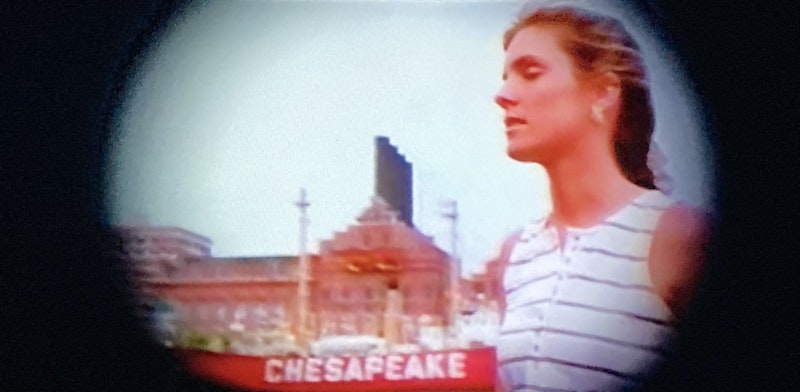As a resident of Baltimore, I’d welcome a year-round stream of visitors coming to the city for a day or weekend, attracted by a rejuvenated Inner Harbor, which this century has fallen into the decay that defined it in the early-1970s, before visionary developer James Rouse, with the eager support of Mayor William Donald Schaefer, catapulted the tourism industry with the then-innovative Harborplace. The area’s a wasteland now, with the old pavilions deserted by retailers and restaurants; it’s an eyesore that unwittingly satirizes what was once called, with public relations hyperbole, the “crown jewel” of Baltimore.
Unlike many critics who are slamming MCP Real Estate (which now owns the dilapidated “mall”) and managing partner and spokesman David Bramble for the recently unveiled plans for a “reimagination” of the Inner Harbor, I support private enterprise and would like to see more of it in Baltimore. (For example, as I’ve complained in recent years in this space, N. Charles St., once the handsome main drag of the city, Baltimore’s “Fifth Avenue,” is marred by boarded-up buildings, generic retailers, vagrants who become nastier each year and even a lack of garbage cans.) But I agree with The Baltimore Sun’s longtime columnist Dan Rodricks—at the paper since 1979—that Bramble’s proposal of creating two “luxury” towers, 25 and 32 stories, with apartments on the Light St. side, and, to soften the blow, a nine-story structure on the Pratt St. side that’ll supposedly house markets and restaurants, would mock the promise of serving the city and create almost no tourist interest. He wrote: “The high-rises in the proposed plans are a bad idea, a developer’s dream and a public nightmare. There’s nothing, as [Bramble] claims, ‘authentically Baltimore’ about building residential towers on public lands along the city’s beloved waterfront.”
Here's what sticks in my craw: while I’m not opposed to very expensive housing units—every city has them, and if Bramble’s idea passes a dozen regulatory hearings, the City Council’ rubber-stamp approval, and a possible charter amendment for the 2024 elections, it’s certainly possible (even if I smell white elephant) that when the buildings are completed in several years a possibly revived local economy will attract buyers—MCP’s call for the state to kick in $400 million for the project is five shades of nervy. Is Baltimore Orioles CEO John Angelos, who’s currently hold the state hostage for more public money before he commits to extending the lease of Camden Yards, advising Bramble?
As reporter Lorraine Mirabella wrote in The Sun earlier this week, “[The $400 million] is a massive ask for a cash-strapped city where residents already complain about resources and money spent on downtown rather than on the multitude of needs in their neighborhoods.” But that’s not an impediment to Bramble and MCP: he has the full support of Mayor Brandon Scott—another lazy mayor, who, one hopes, will be defeated next year by a man or woman who isn’t a city bureaucratic hack—and first-term Gov. Wes Moore, a likable guy who’s accomplished almost nothing since he replaced the attention-starved Republican Larry Hogan at the start of 2023.
Baltimore today is reminiscent of when I first arrived here for college in the fall of 1973: a city that always slept, its zest zapped by the 1968 riots and subsequent “white flight” to the suburbs’ the loss of manufacturing plants; a decrepit and deserted downtown; it was only the wonderfully curious Fells Point and Charles Village and Waverly neighborhoods that offered much in dining, recreation, and bookstores. But Schaefer was a dogged mayor—even if controlled by a political machine there was never any evidence that he pocketed a nickel during his four-term tenure—and before hooking up with James Rouse, plumped for Baltimore’s annual City Fair (which started in 1970 and continued for 20 years) and more significantly, set up the program of “dollar-houses” for young people, and equally young and eager developers, to repair at least some of the neighborhood damage from the previous decade. South Baltimore’s Federal Hill suddenly hummed, and then the instantaneous success of Harborplace brought more business to the downtown strip.
That’s gone now—and just imagine if the not far-fetched possibility that the Orioles move out of town comes to pass—but there’s no cheerleader like Schaefer to cajole the business community for innovative ideas to return Baltimore to its most-recent zenith of the 1980s. That’s cause for despair among Baltimoreans right now, but the entire imbroglio could be flipped within two years, if a new crop of elected officials, not beholden to anyone, in or out of government, can be goaded into service. My bet is that will happen: Baltimore’s losing population, and will never regain its strength of the mid-20th century, but it’s not a backwater in Howard County, and is ripe for a new generation of leadership, people who won’t get fleeced by the likes of David Bramble and John Angelos.
—Follow Russ Smith on Twitter: @MUGGER2023

